Affiliate links on Android Authority may earn us a commission. Learn more.
What's happening to Samsung?
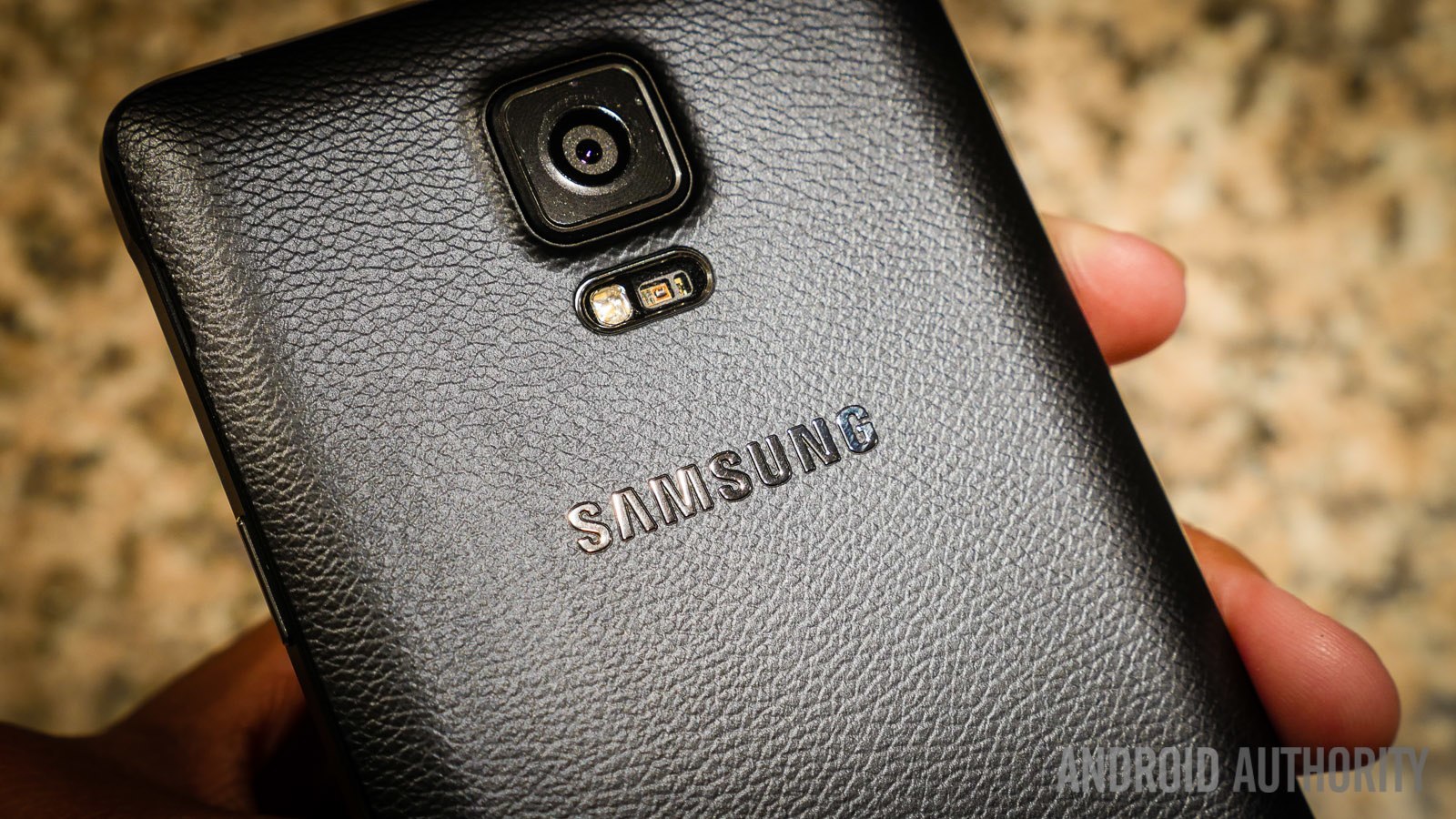
2014 is going to be remembered as a bad year for Samsung and is almost certainly one of the worst in the company’s history. Income has slumped throughout the year and Q3 profits were miserable in the company’s key IT & Mobile business segments. Just what is going wrong over at Samsung?
First things first, let’s take a closer look at Samsung’s most recent figures and see exactly which business division is causing the company the most problems.
Starting with sales revenues, we can see that the majority of Samsung’s business arms have managed to hold steady revenues for the past three years. Device Solutions have seen a slow decline in sales, but IT and Mobile Communications, of which smartphone revenues make up a majority share, have been steadily falling since mid-2013. The worrying trend is that Samsung’s mobile division has fallen even faster than it rose, with revenues now back at early 2012 levels.
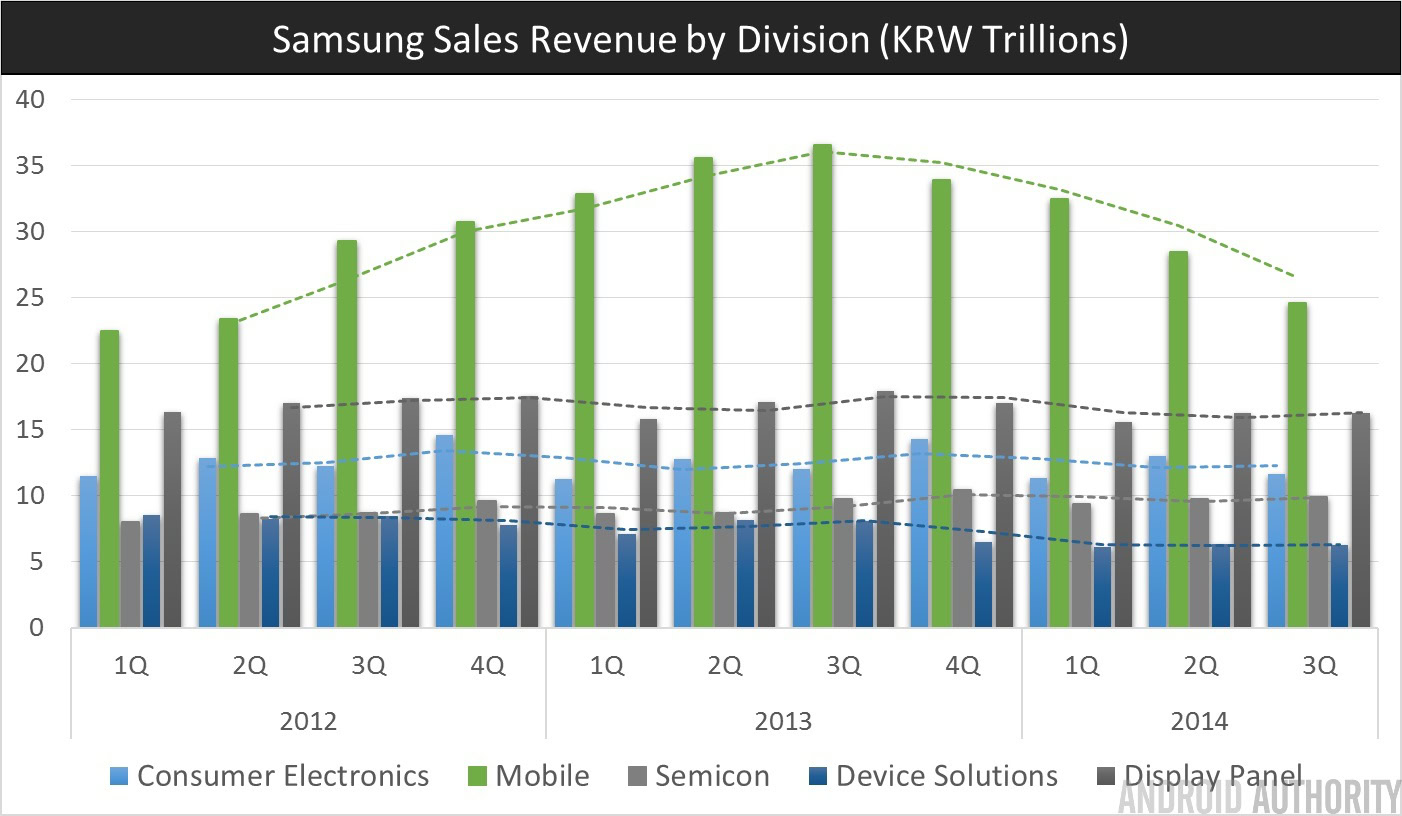
The problem for Samsung, in terms of sales, is not that its products are bad, not that it has fallen behind the competition, nor that the company is suffering a brand crisis. More consumers are using Samsung devices than ever and the company is still the largest smartphone brand in many regions around the world. The problem is that the markets where Samsung has the strongest presence are heavily saturated, leading to a fall in sales.
Figures we collected earlier in the year showed that typical Samsung strongholds, such as the US, Western Europe, and Japan/Korea, are now the slowest growing markets. Samsung flourished from the Western smartphone boom through the early 2010’s, but the growth has slowed recently.
Technology is a big part of the reason for this slowdown. Smartphones sold in 2012 and 2013 still hold up very well against today’s flagship handsets. There is little reason for these consumers to upgrade from a Galaxy S4 to S5, or to a new Galaxy Alpha or Note 4. Especially not at the high prices Samsung charges.
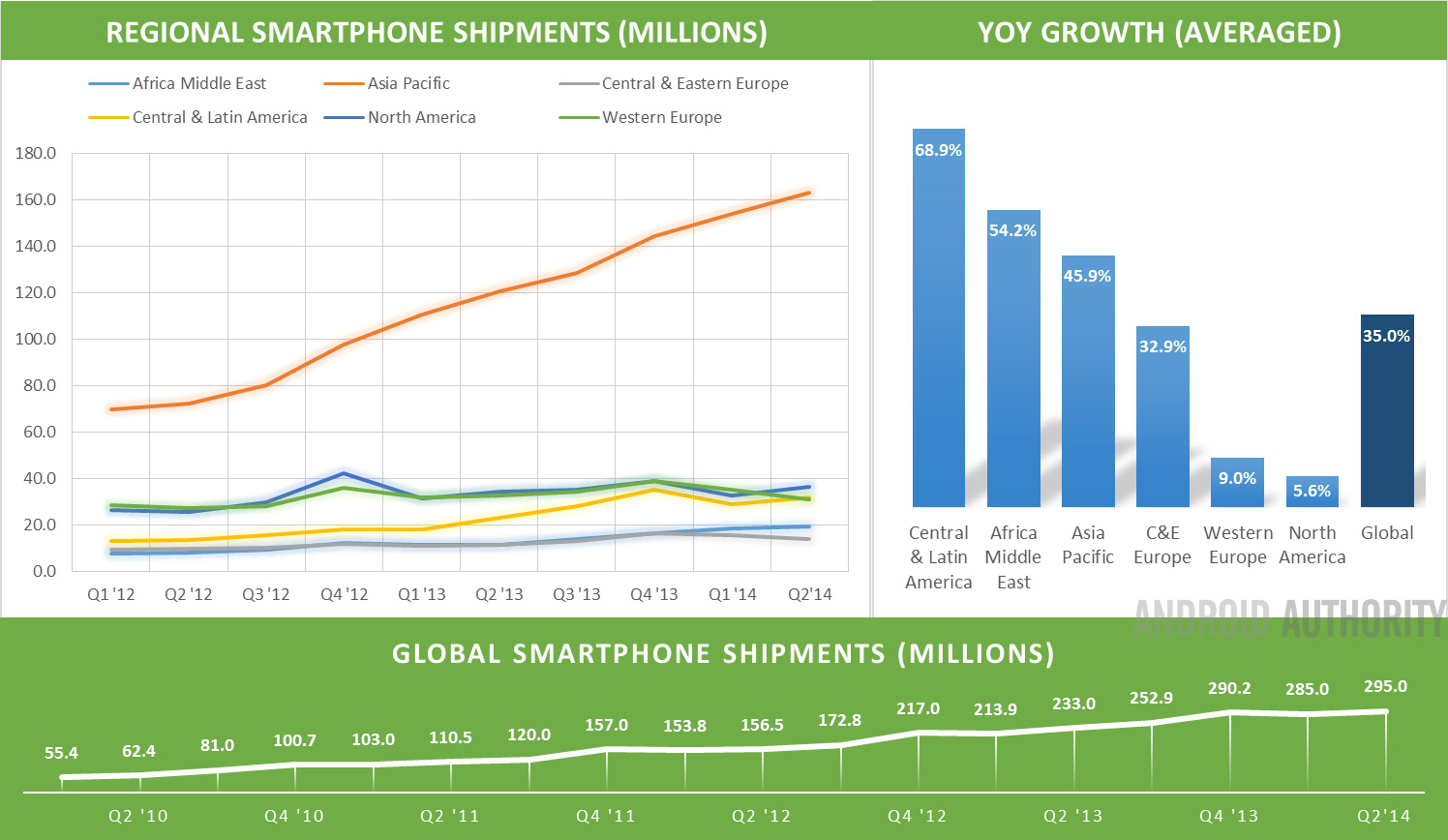
You can see that smartphone sales have been mostly flat in many markets since 2012, with Asia and Central America showing the strongest levels of growth. These are also the two regions where Samsung doesn’t have a hugely dominant share of the Android market. Asia is actually mostly evenly split amongst a wide range of competing smartphone manufacturers.
The hugely competitive nature of these growing markets and technological saturation in others is putting downward pressure on prices. We can see this in the success of brands like LG, Motorola, and Xiaomi, who are all performing this year well due to the lower price point of their high-end smartphones. HTC, Samsung, and Sony, which all maintain higher price points, are all having a harder time.
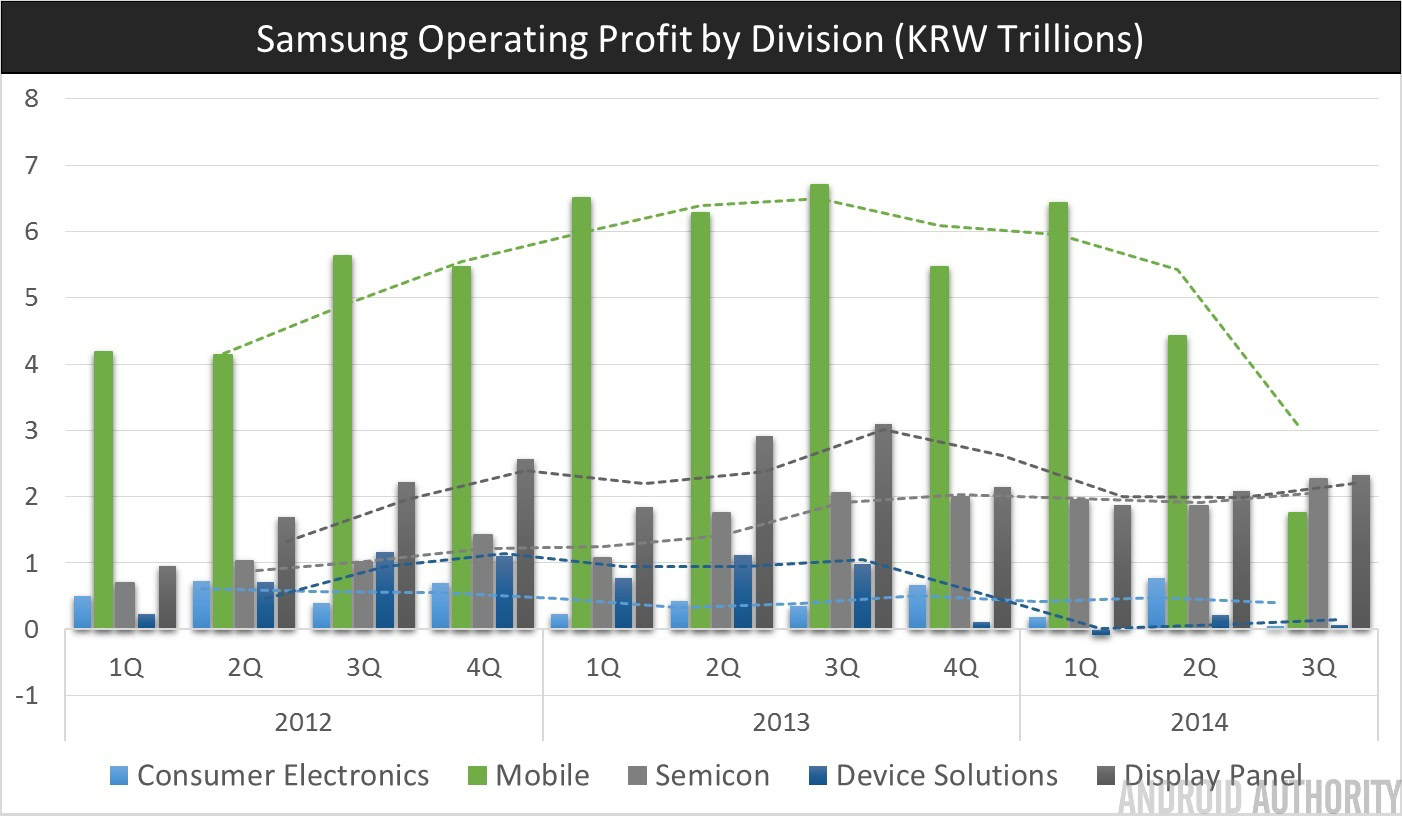
Profits for Samsung’s mobile division are now substantially lower than 2012 levels and have dropped off sharply over the last two quarters. Given that the decline in profits has happened even more suddenly and sharply than the mobile division’s drop in sales revenue, there must be additional factors at work.
Samsung’s growing product portfolio could have a lot to do with this. Its huge number of Galaxy S5 variants, the Note Edge and the upcoming Galaxy A series all add substantial expenses to Samsung’s balance sheet, yet reception and sales numbers aren’t going to match that of Samsung’s major flagship launches. Chasing consumers with new product materials and features is an expensive business, but it looks like Samsung’s solution of choice to its sales problems.
Apple, which targets an even higher price bracket, is not suffering to the same extent partly because a lot of the company’s revenue comes from additional product and service sales. Samsung doesn’t have an iTunes store to keep revenue from existing customers coming in. Furthermore, Samsung has to compete against a huge variety of Android OEMs, whilst there’s only one hardware player if you’re looking for an iOS device. This offers Apple some additional security, despite operating in the same saturated markets as Samsung.
On the positive side of things, Samsung’s display panel and semiconductor businesses have seen profits grow over the past few years, mostly due to increasing demand from Samsung’s own competitors. The extra completion and strong growth in Asian markets has helped push up demand for Samsung’s display and chip products, and Samsung’s manufacturing processeses have become more profitable as its technology has matured. Samsung’s 20nm manufacturing process and memory options are also expecting strong demand going forward.
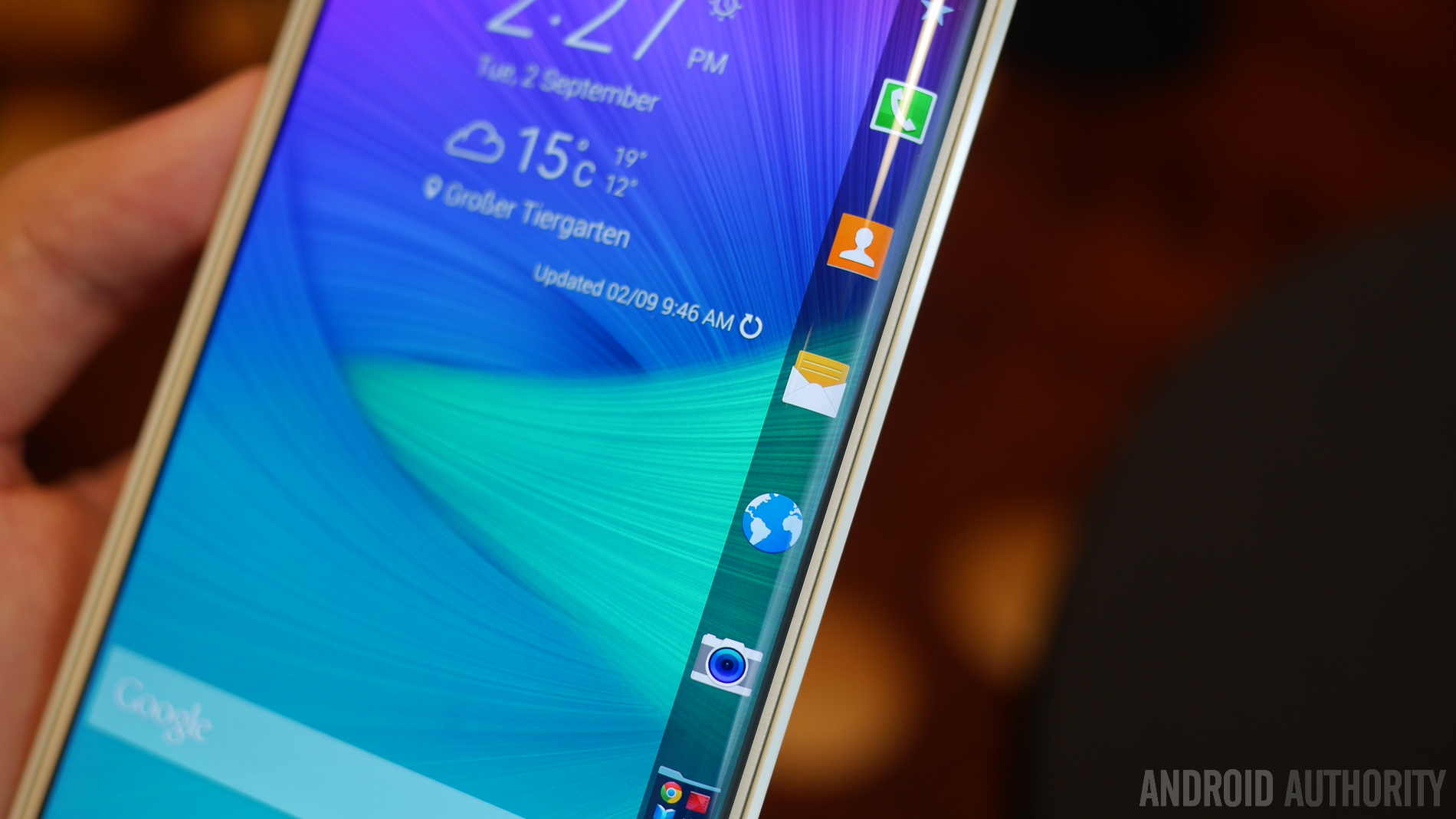
Samsung’s problems are grounded firmly in its smartphone division, the rest of the company seems to be faring much better. The company doesn’t seem to have adapted to the changing nature of the smartphone market over the past 18 months. Slowing growth in the West, falling prices, and increased competition is a tough environment to do business. Samsung’s current strategy is costing the company dearly.
With all of the above said, Samsung’s various divisions are all still profitable and the smartphone segment remains a huge earner for the company. Samsung isn’t facing a Blackberry or Nokia-esque decline into oblivion, as it still has a strong brand presence throughout most of the world. Samsung is still making more money that a lot of its rivals and is not the only big brand feeling the pinch this year.
Instead, Samsung is suffering the comedown after years of outstanding sales and expenditure is riding high as the company searches for a way to reverse this inevitable slump in sales. Time will tell if Samsung can recover its previous fortunes.